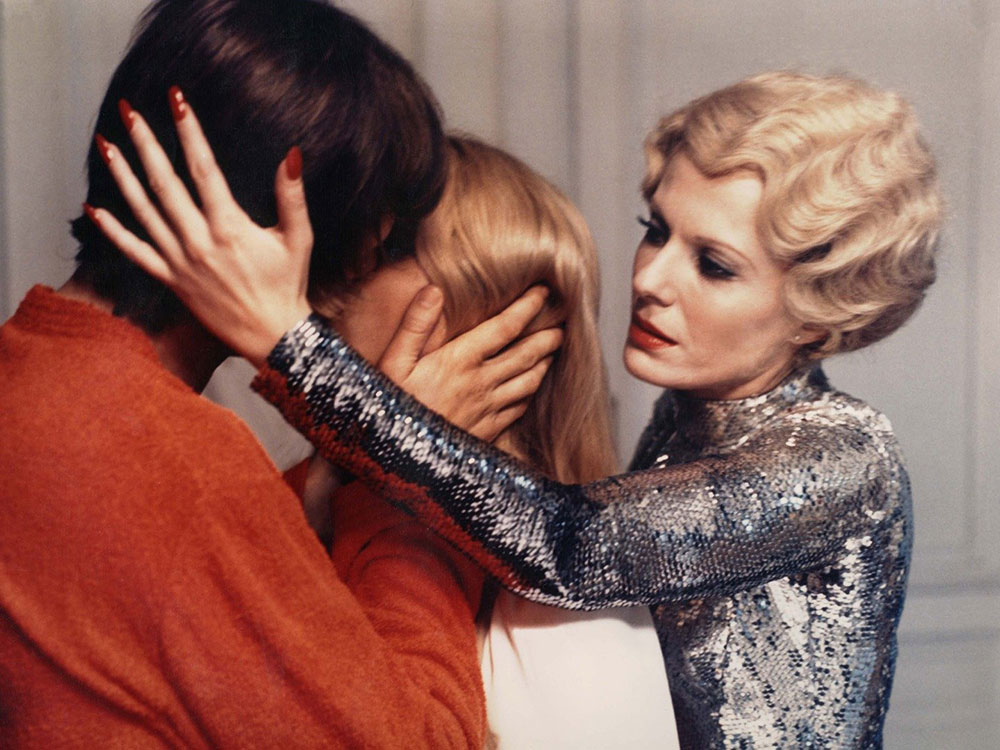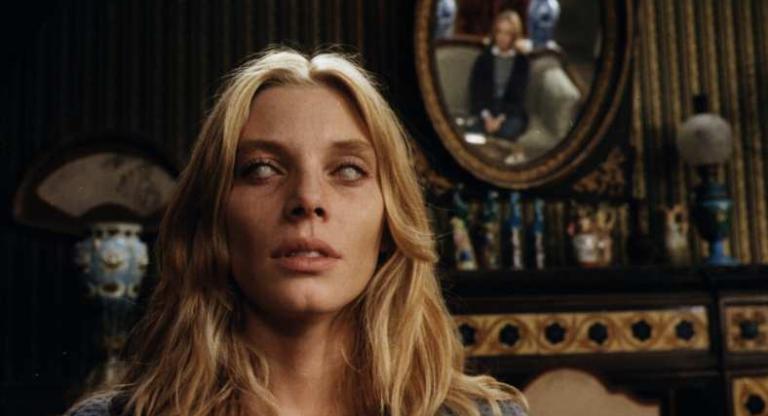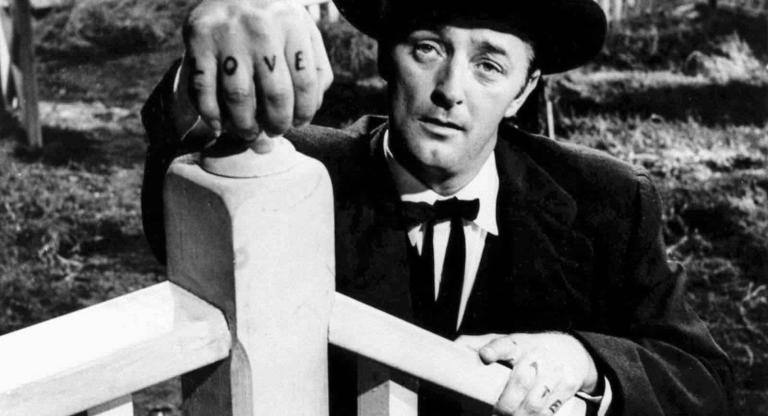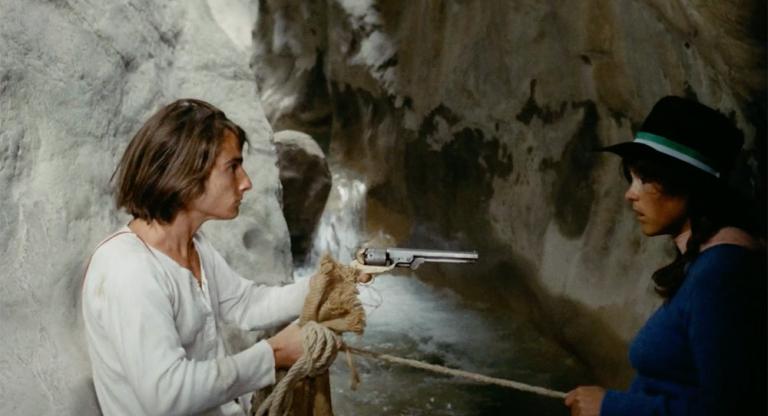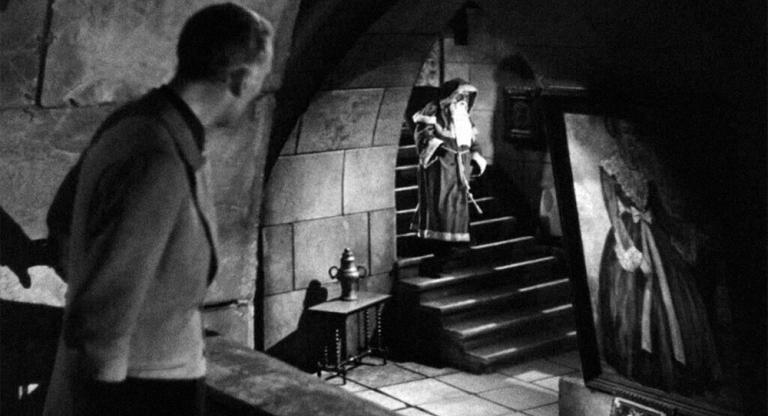Daughters of Darkness (1971) is a fantasy of impotence. Cited by Camille Paglia as a “classy vampire movie,” Harry Kumel’s erotic horror features sculpted-from-marble Delphine Seyrig as Countess Elizabeth, a mysterious seductress who has a taste for younger women. In reverse-Bluebeard fashion, the Countess adopts protégées and provides them with a sapphic sentimental education. The trouble comes when these girls reach their expiration dates.
Like other queer vampire films from the 1970s, Daughters of Darkness begins as a comedy of manners. It combines The Velvet Vampire’s (1971) critique of heterosexual marriage dynamics with the class satire of The Vampire Lovers (1970). The film opens with naïve, wealthy newlyweds on an idyllic honeymoon. The violet-toned sex scene is refracted against an atonal soundtrack as the two lovers admit to not being in love. They listlessly eat a decadent meal in an empty hotel dining room; the spaces in this film are seldom populated by more than a few people, as if everything is happening in a void. Seyrig swans through these huge, desolate sets like the benevolent dictator of her vampire harem.
In opposition to Seyrig, male protagonist Stefan (John Karlen) is an absurd and ineffectual man, another commonality the film shares with the queer vampire micro-genre of the ‘70s and ‘80s – Fascination and The Shiver of the Vampires, for example. In an attempt to initiate passionate sex he throws an entire breakfast tray to the floor breaking plates, and buries his head in his wife Valerie’s chest (Danielle Ouimet). She is totally indifferent, absorbed in daydreams of a relationship modeled by the Countess and her secretary-girlfriend Ilona (Andrea Rau).
Daughters of Darkness is an expressly queer film, but the characters are more sexually attracted to chaos than anything. In one jarring scene that ruptures the playful tone, Stefan beats Valerie as a storm rages outside, later falling asleep with the belt in his hand. This act of motivated violence contrasts with the later accidental death of Stefan’s extramarital love interest. After kissing Stefan in the shower to punish the Countess for casting her aside, she slips and falls onto a razor, thus framing him as the murder suspect. Her death is pointless; his participation is impotent.
The Countess, on the other hand, is power personified. The film aligns her with quintessential vampire imagery but never makes explicit its supernatural undertones. She’s beautiful and ageless; she has a taste for human blood. When she kisses Valerie, she marks her with vibrant red lipstick and envelopes her into her cloak, silhouetted against the sky like a bat.
Daughters of Darkness and other films of the genre are cathartic because with their reversal of reality, they stumble into revealing the very legitimate desire to live in a world where masculine violence feels impossible. It thematizes male impotence: tiny guns that miss every target, men sprawled in tiny satin bathrobes. . . . These images come from a fantasy world in which men cannot do actual harm. For many women, the enjoyment derived from watching tortured female victims writhe in the hands of huge monstrous men is a complicated, guilty enjoyment. I can adore the bloodbath of a giallo and the hyperbolic deaths of a slasher while also understanding that ultimately, what I am watching depends on the sexual humiliation of women. Alongside so many erotic horror films showing cold, brutal femicide, Daughters of Darkness suggests that this time, it is men who should be afraid.
Daughters of Darkness screens Monday, Oct 21, at the Roxie in the series Slanted Lens.
Previously:
Daughters of Darkness screens today, October 22, and on October 26, at the Roxy Cinema in a new digital restoration. The screening is part of the series “Death Takes a Holiday,” presented by Screen Slate and Steak Mtn.
